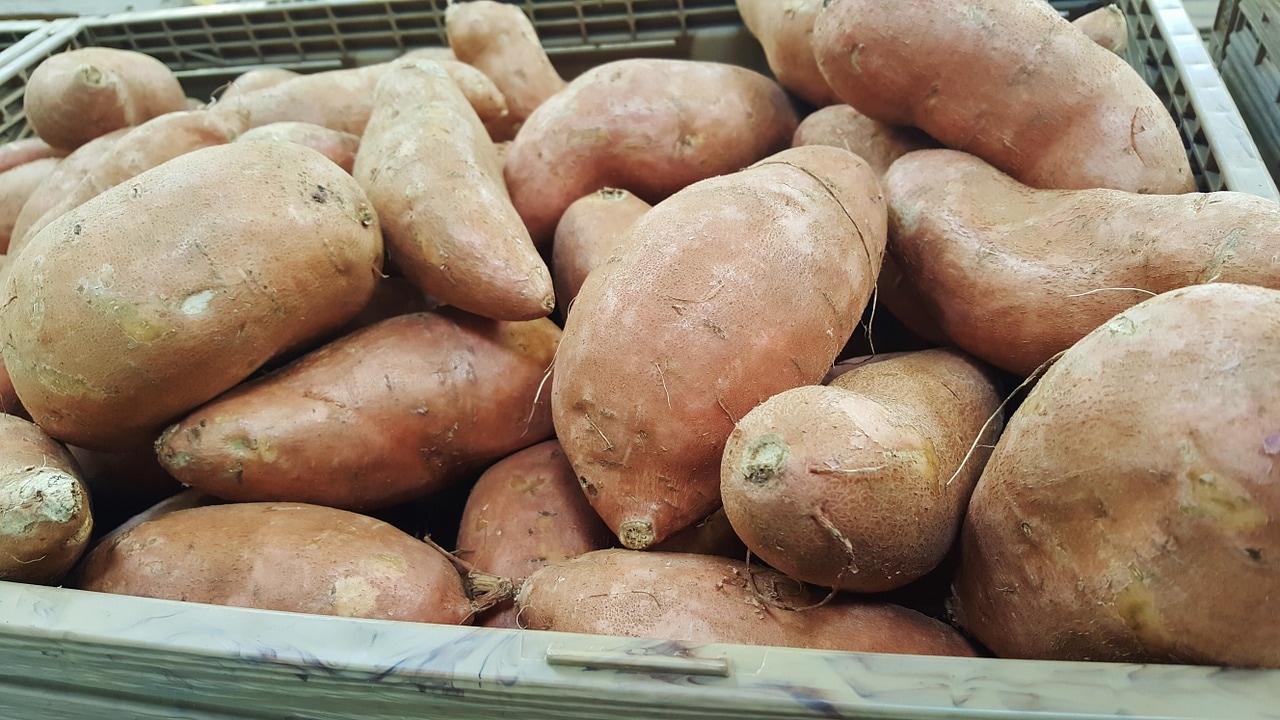From Seedling to Harvest to Curing
According to USDA figures and the North Carolina Sweet Potato Commission, 400 farmers planted 60,000 acres of sweet potato in 2010 worth about 182 million dollars to North Carolina’s economy. That’s roughly half of the US supply. How exactly do plastic bins help?
Well, sweet potatoes are grown from “slips”. These are live seedlings and must be kept in containers that will not collect any moisture. Ventilated bins are required for this step. Later, when the potatoes are harvested, they again need to be kept in ventilated bins.
Now, this part may surprise you. Most producers cure the sweet potato to be “sweet” over the course of several weeks. That’s right, these tasty tubers are not naturally sweet. Who knew? They are kept in a climate controlled environment where the potatoes need to be exposed to exacting levels of humidity and heat. And, you guessed it, ventilated bins are used for the curing too.
Plastic vs Wood Agricultural Bins
A plastic ventilated bulk bin for agriculture offers many improvements over wood:
- Moisture Resistance
First and most importantly, plastic bins do not hold moisture. Wood not only absorbs moisture but chemicals too. Wood bins “weather”, resulting in rough surfaces which can harbor various disease-causing organisms. Plastic bins are smooth and can be sterilized. - Better Ventilation
The ventilation slots in a plastic bin amount to 7–11% of the surface area compared to plywood bins at only 1.5%. With better ventilation, you can stack your produce closer together and still have sufficient air movement through the stacks. Plus, an interlocking system provides safer and possibly higher stacking. - Safer Handling
Plastic has no nails or splinters to puncture food or injure handlers. The bin floor and walls are smooth. At 30-40 lbs each, plastic ventilated bins are lighter and easier to lift than wooden agricultural bins.
Long Lifespan
With proper handling, you can expect plastic sweet potato bins to last about 15 years. And, when they’ve reached the end of their useful lifespan, they can be recycled. Always consistent in size, plastic ventilated bins will not warp, splinter, or weather making them a great choice for sweet potatoes and the agricultural industry.

